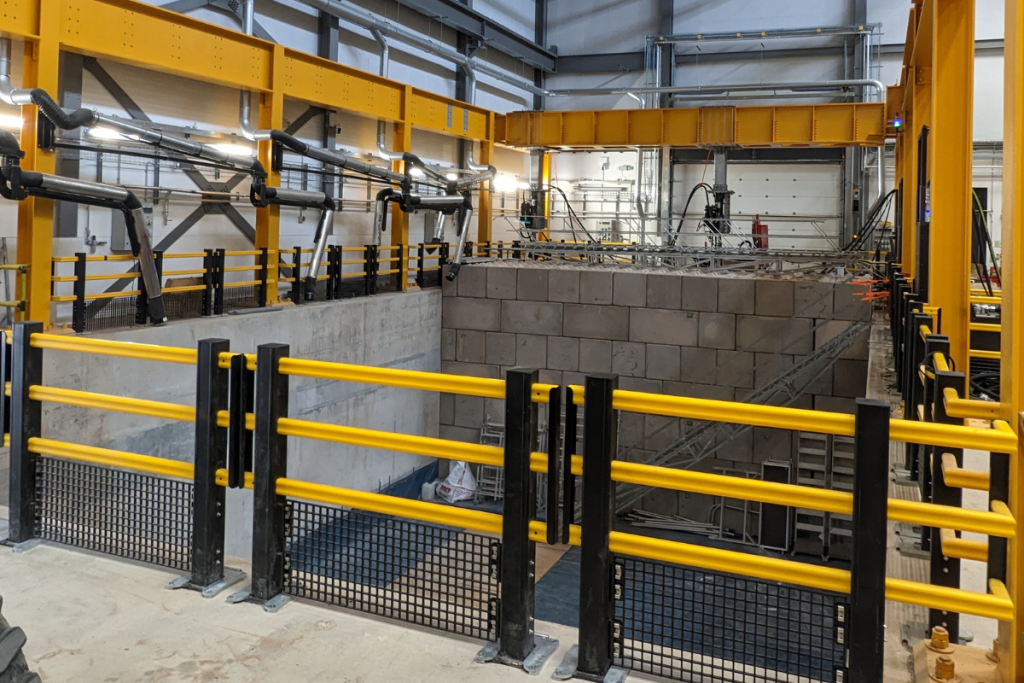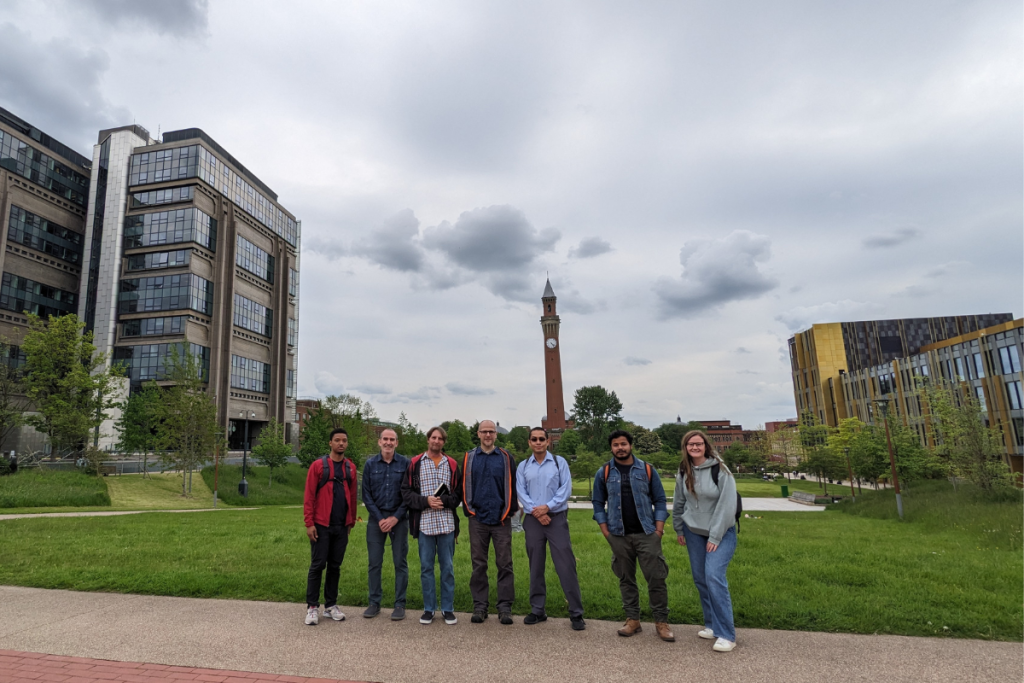
ISTC researchers recently visited the University of Plymouth and the University of Birmingham to learn more about their contaminants research. Perry Akrie, a visiting scientific specialist at ISTC, shares his impressions of the trip.
Our journey began with a trip to Plymouth to visit with Dr. Andrew Turner, Professor of Environmental Sciences at the University of Plymouth, and a group of his students. John Scott gave a short talk about his research on microplastics at ISTC over the past several years and the students from Dr. Turner’s lab group presented their current research. Topics included polymer identification, additives and contaminants, adsorption of pollutants, fate and transport, weathering and degradation, and occurrence of microplastics.

We also met with Rob Arnold, a colleague of Dr. Turner’s. Rob is an artist and activist on the topic of ocean pollution. He brought some of his collection of plastics that he has found washed up on the shore. This included a collection of vintage toothbrushes, assorted toys, and food wrappers, as well as a collection he affectionately refers to as “wedgies,” bits of plastic which have had other bits of plastic wedged into them in their travels through the ocean. Some of his most well-known art includes a 5.5-foot sculpture in the shape of the Moai statues of Easter Island that is made entirely of plastic waste. You see more of his art on Instagram (@rob.arnold.art).
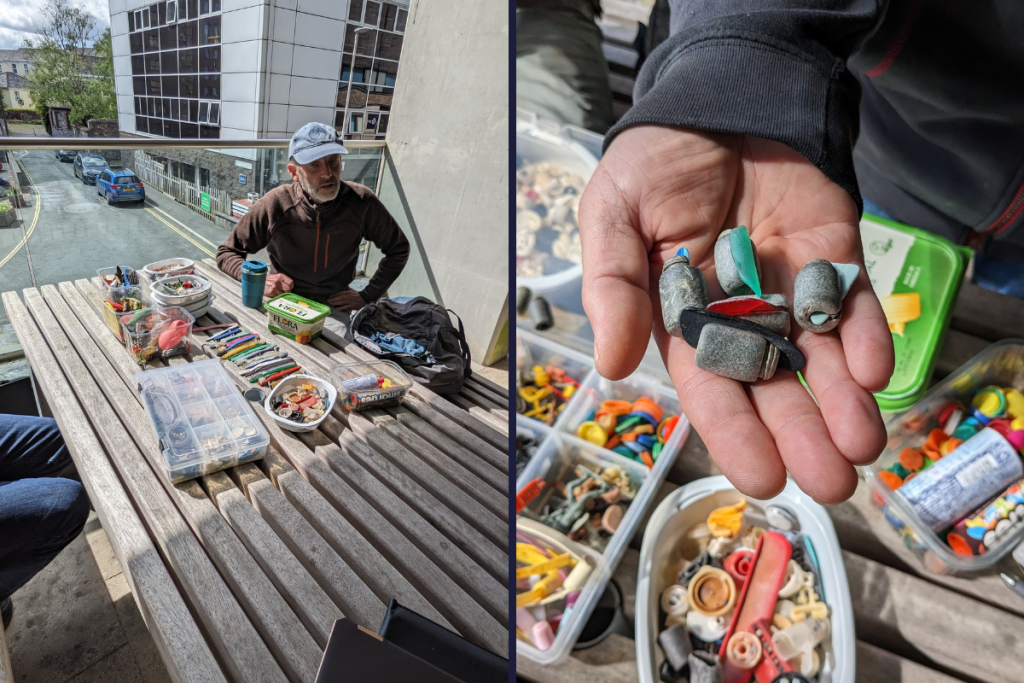
We then traveled to the University of Birmingham to meet with members of the BRIDGE Birmingham-Illinois Partnership. This partnership has been in place since 2014. It allows both universities to exchange knowledge across disciplines through face-to-face meetings between faculty, staff, and students. As part of this program, Kate Rowley and Sophie Comer-Warner, students from the University of Birmingham, will be visiting ISTC to further their research.
The group from the University of Illinois included ISTC chemist John Scott, geology professor Jim Best, assistant professor of civil engineering Rafael Omar Tinoco Lopez, and and myself. We met with ecohydrology and biogeochemistry professor Stefan Krause and hydrology professor David Hannah from the University of Birmingham. We gave feedback on short presentations made by the students from Birmingham on topics that included transport of tire wear particles, biodegradation of microplastics in soils, and microplastics response to rainfall events.
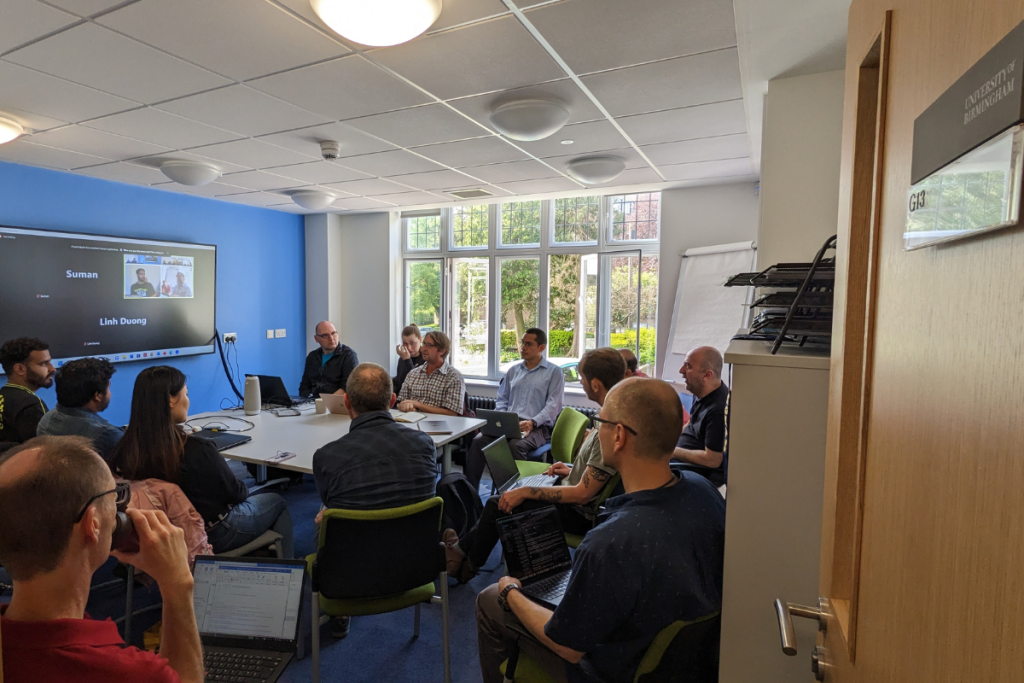
The next day, we were taken on a tour of the preparation and analysis labs. Some of the most impressive facilities there were EcoLab and the National Buried Infrastructure Facility (NBIF).
EcoLab is a versatile open-air facility that hosts an array of experiments from many disciplines. Researchers in our host lab group have used it to study how microplastics are transported through water.
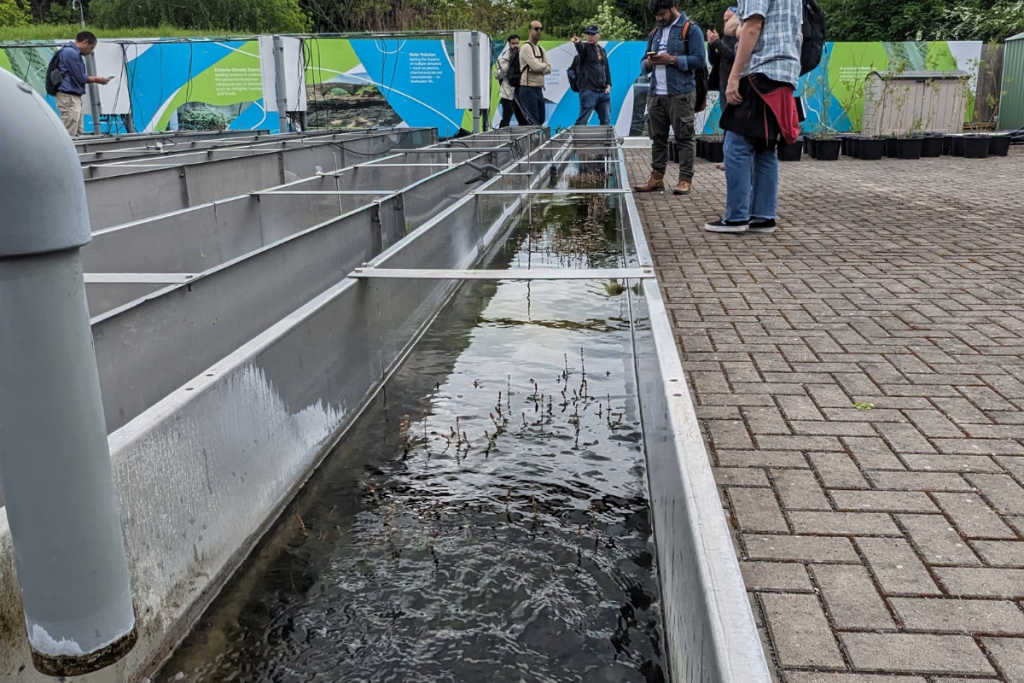
The NBIF’s main feature is a 25m x 10m x 5m pit that can be split into smaller sections and filled with various structures, soils, and sensors related to several potential research questions. The sky is the limit for this one-of-a-kind facility.
